High-Resolution Observations of Transport and Exchange Processes in Mountainous Terrain
Abstract
1. Introduction
- small- and meso-scale mountain induced flow patterns (slope winds, valley and mountain winds, and alpine pumping [13]); including their interaction
- triggering and development of convection; including associated venting of energy and substances from the atmospheric boundary layer into the free troposphere
2. Overall Challenges to Observations in Orographically Complex Terrain
3. Surface Measurement Techniques
3.1. In Situ Measurements
3.1.1. Surface Parameters
3.1.2. Radiation
3.1.3. Temperature
3.1.4. Pressure
3.1.5. Wind and Humidity
3.1.6. Eddy-Covariance Measurements and Post-Processing
3.2. Surface-Based Remote Sensing
3.2.1. Passive Remote Sensing
3.2.2. Active Remote Sensing
4. Airborne and Satellite Observations
4.1. Radiosondes and Tethered Balloons
4.2. Aircraft in Situ
4.3. Airborne Remote Sensing
4.4. UAVs and RPAS
4.5. Satellite-Borne Remote Sensing
5. Remaining Challenges, Gaps and Potentials
6. Conclusions and Outlook
Author Contributions
Funding
Acknowledgments
Conflicts of Interest
References
- Kirshbaum, D.; Adler, B.; Kalthoff, N.; Barthlott, C.; Serafin, S. Moist orographic convection: Physical mechanisms and links to surface-exchange processes. Atmosphere 2018, 9, 80. [Google Scholar] [CrossRef]
- Smith, R.B. The influence of mountains on the atmosphere. Adv. Geophys. 1979, 21, 87–230. [Google Scholar]
- Blumen, W. (Ed.) Atmospheric Processes over Complex; American Meteorological Society: Boston, MA, USA, 1990; ISBN 978-1-935704-25-6. [Google Scholar]
- Reiter, E.R. Where we are and where we are going in mountain meteorology. Bull. Am. Meteorol. Soc. 1982, 63, 1114–1122. [Google Scholar] [CrossRef]
- Kuettner, J.P. The Aim and Conduct of ALPEX. Scientific Results of the Alpine Experiment; GARP Publications Series No. 27, 1986, WMO/TD 108; World Meteorological Organization: Geneva, Switzerland, 1986; pp. 3–14. [Google Scholar]
- Bougeault, P.; Benech, B.; Bessemoulin, P.; Carissimo, B.; Clar, A.J.; Pelon, J.; Petitdidier, M.; Richard, E. PYREX: A summary of findings. Bull. Am. Meteorol. Soc. 1997, 78, 637–650. [Google Scholar] [CrossRef]
- Wratt, D.S.; Ridley, R.N.; Sinclair, M.R.; Larsen, H.; Thompson, S.M.; Henderson, R.; Austin, G.L.; Bradley, S.G.; Auer, A.; Sturman, A.P.; et al. The New Zealand Southern Alps Experiment. Bull. Am. Meteorol. Soc. 1996, 77, 683–692. [Google Scholar] [CrossRef]
- Bougeault, P.; Binder, P.; Buzzi, A.; Dirks, R.; Houze, R.; Kuettner, J.; Smith, R.B.; Steinacker, R.; Volkert, H. The MAP special observing period. Bull. Am. Meteorol. Soc. 2001, 82, 433–462. [Google Scholar] [CrossRef]
- Rotach, M.W.; Zardi, D. On the boundary-layer structure over highly complex terrain: Key findings from MAP. Q. J. R. Meteorol. Soc. 2007, 133, 937–948. [Google Scholar] [CrossRef]
- Fiedler, F.; Borrell, P. TRACT: Transport of air pollutants over complex terrain. In Exchange and Transport of Air Pollutants over Complex Terrain and the Sea; Springer-Verlag: Berli/Heidelberg, Germany; New York, NY, USA, 2000; pp. 223–268. ISBN 3-540-67438-1. [Google Scholar]
- Chow, F.K.; Schär, C.; Ban, N.; Lundquist, K.A.; Schlemmer, L.; Shi, X. Crossing multiple gray zones in the transition from mesoscale to microscale simulation over complex terrain. Atmosphere 2018. in preparation. [Google Scholar]
- Emeis, S. Measurement Methods in Atmospheric Sciences. In Situ and Remote; Borntraeger: Stuttgart, Germany, 2010. [Google Scholar]
- Lugauer, M.; Winkler, P. Thermal circulation in South Bavaria—Climatology and synoptic aspects. Meteorol. Z. 2005, 14, 15–30. [Google Scholar] [CrossRef]
- De Wekker, S.F.J.; Giovannini, L.; Gutmann, E.; Knievel, J.C.; Kossmann, M.; Zardi, D. Meteorological applications benefiting from an improved understanding of atmospheric exchange processes over mountains. Atmosphere 2018, 9, 371. [Google Scholar] [CrossRef]
- Serafin, S.; Adler, B.; Cuxart, J.; De Wekker, S.F.J.; Gohm, A.; Grisogono, B.; Kalthoff, N.; Kirshbaum, D.J.; Rotach, M.W.; Schmidli, J.; et al. Exchange processes in the atmospheric boundary layer over mountainous terrain. Atmosphere 2018, 9, 102. [Google Scholar] [CrossRef]
- Stull, R. An Introduction to Boundary Layer Meteorology; Kluwer Academic Publishers: Dordrecht, The Netherlands, 1988. [Google Scholar]
- Beljaars, A.C.M.; Holtslag, A.A.M. Flux Parameterization over Land Surfaces for Atmospheric models. J. Appl. Meteorol. 1991, 30, 327–341. [Google Scholar] [CrossRef]
- Lehner, M.; Rotach, M.W. Current challenges in understanding and predicting transport and exchange in the atmosphere over mountainous terrain. Atmosphere 2018, 9, 276. [Google Scholar] [CrossRef]
- Fernando, H.J.S.; Pardyjak, E.R.; Di Sabatino, S.; Chow, F.K.; De Wekker, S.F.J.; Hoch, S.W.; Steenburgh, W.J. The MATERHORN: Unraveling the intricacies of mountain weather. Bull. Am. Meteorol. Soc. 2015, 96, 1945–1967. [Google Scholar] [CrossRef]
- Cuxart, J.; Conangla, L.; Martínez-Villagrasa, D.; Wrenger, B.; Miró, J.R.; Simó, G.; Jiménez, M.A. Evolution of the temperature profile during the life-cycle of a valley-confined cold pool in the Pyrenees. In Proceedings of the ICAM 2017, Reykjavik, Island, 18–23 June 2017. [Google Scholar]
- Paci, A.; Cuxart, J.; Bech, J.; Soler, M.R.; Miró, J.R. The Cerdanya-2017 field experiment: An overview of the campaign and a few preliminary results. In Proceedings of the ICAM 2017, Reykjavik, Island, 18–23 June 2017. [Google Scholar]
- Zacharias, S.; Bogena, H.; Samaniego, L.; Mauder, M.; Fuß, R.; Pütz, T.; Frenzel, M.; Schwank, M.; Baessler, C.; Butterbach-Bahl, K.; et al. A Network of Terrestrial Environmental Observatories in Germany. Vadose Zone J. 2011, 10, 955–973. [Google Scholar] [CrossRef]
- Whiteman, C.D.; Muschinski, A.; Zhong, S.; Fritts, D.; Hoch, S.W.; Hahnenberger, M.; Yao, W.; Hohreiter, V.; Behn, M.; Cheon, Y.; et al. Metcrax 2006. Bull. Am. Meteorol. Soc. 2008, 89, 1665–1680. [Google Scholar] [CrossRef]
- Lehner, M.; Whiteman, D.; Hoch, S.W.; Crosman, E.; Jeglum, M.; Cherukuru, N.; Calhoun, R.; Adler, B.; Kalthoff, N.; Rotunno, R.; et al. The METCRAX II field experiment—A study of downslope windstorm-type flows in Arizona’s Meteor Crater. Bull. Am. Meteorol. Soc. 2016, 97, 217–235. [Google Scholar] [CrossRef]
- Wolf, B.; Chwala, C.; Fersch, B.; Garvelmann, J.; Junkermann, W.; Zeeman, M.J.; Angerer, A.; Adler, B.; Beck, C.; Brosy, C.; et al. The ScaleX campaign: Scale-crossing land-surface and boundary layer processes in the TERENO-preAlpine observatory. Bull. Am. Meteorol. Soc. 2017, 98, 1217–1234. [Google Scholar] [CrossRef]
- Mauder, M.; Desjardins, R.L.; Pattey, E.; Worth, D. An Attempt to Close the Daytime Surface Energy Balance Using Spatially-Averaged Flux Measurements. Bound. Layer Meteorol. 2010, 136, 175–191. [Google Scholar] [CrossRef]
- Grubišić, V.; Doyle, D.D.; Kuettner, J.; Mobbs, S.; Smith, R.B.; Whiteman, C.D.; Dirks, R.; Czyzyk, S.; Cohn, S.A.; Vosper, S.; et al. The Terrain-Induced Rotor Experiment: A field campaign overview including observational highlights. Bull. Am. Meteorol. Soc. 2008, 89, 1513–1533. [Google Scholar] [CrossRef]
- Wulfmeyer, V.; Behrendt, A.; Kottmeier, C.; Corsmeier, U.; Barthlott, C.; Craig, G.C.; Hagen, M.; Althausen, D.; Aoshima, F.; Arpagaus, M.; et al. The Convective and Orographically-induced Precipitation Study (COPS): The scientific strategy, the field phase, and research highlights. Q. J. R. Meteorol. Soc. 2011, 137, 3–30. [Google Scholar] [CrossRef]
- Ducrocq, V.; Braud, I.; Davolio, S.; Ferretti, R.; Flamant, C.; Jansa, A.; Kalthoff, N.; Richard, E.; Taupier-Letage, I.; Ayral, P.A.; et al. HyMeX-SOP1, the field campaign dedicated to heavy precipitation and flash flooding in the northwestern Mediterranean. Bull. Am. Meteorol. Soc. 2014, 95, 1083–1100. [Google Scholar] [CrossRef]
- The Passy-2015 Field Experiment: Atmospheric Dynamics and Air Quality in the Arve River Valley. Available online: http://lodel.irevues.inist.fr/pollution-atmospherique/index.php?id=5903&format=print (accessed on 9 July 2018).
- Staquet, C.; Duarte, J.Q.; Todzo, S.; Peinke, I.; Arduini, G.; Chemel, C.; Troude, F. On the relationship between atmospheric dynamics and PM10 concentration in the Arve Valley around Passy. In Proceedings of the ICAM 2017, Reykjavik, Island, 18–23 June 2017. [Google Scholar]
- Rotach, M.W.; Stiperski, I.; Fuhrer, O.; Goger, B.; Gohm, A.; Obleitner, F.; Rau, G.; Sfyri, E.; Vergeiner, J. Investigating exchange processes over complex topography: The Innsbruck box (i-Box). Bull. Am. Meteorol. Soc. 2017, 98, 787–805. [Google Scholar] [CrossRef]
- Watanabe, F.; Uchida, T. Micro-Siting of Wind Turbine in Complex Terrain: Simplified Fatigue Life Prediction of Main Bearing in Direct Drive Wind Turbines. Wind Eng. 2015, 39, 349–368. [Google Scholar] [CrossRef]
- Lange, J.; Mann, J.; Berg, J.; Parvu, D.; Kilpatrick, R.; Costache, A.; Chowdhury, J.; Siddiqui, K.; Hangan, H. For wind turbines in complex terrain, the devil is in the detail. Environ. Res. Lett. 2017, 12, 094020. [Google Scholar] [CrossRef]
- Rendón, A.M.; Salazar, J.F.; Palacio, C.A.; Wirth, V.; Brötz, B. Effects of Urbanization on the Temperature Inversion Breakup in a Mountain Valley with Implications for Air Quality. J. Appl. Meteorol. Climatol. 2014, 53, 840–858. [Google Scholar] [CrossRef]
- Lareau, N.P.; Crosman, E.; Whiteman, C.D.; Horel, J.D.; Hoch, S.W.; Brown, W.O.; Horst, T.W. The persistent cold-air pool study. Bull. Am. Meteorol. Soc. 2013, 94, 51–63. [Google Scholar] [CrossRef]
- Giovannini, L.; Zardi, D.; de Franceschi, M. Analysis of the Urban Thermal Fingerprint of the City of Trento in the Alps. J. Appl. Meteorol. Climatol. 2011, 50, 1145–1162. [Google Scholar] [CrossRef]
- Heimann, D.; de Franceschi, M.; Emeis, S.; Lercher, P.; Seibert, P. (Eds.) Air Pollution, Traffic Noise and Related Health Effects in the Alpine Space—A Guide for Authorities and Consulters; Università degli Studi di Trento, Dipartimento di Ingegneria Civile e Ambientale: Trento, Italy, 2007. [Google Scholar]
- De Franceschi, M.; Zardi, D. Study of wintertime high pollution episodes during the Brenner-South ALPNAP measurement campaign. Meteorol. Atmos. Phys. 2009, 103, 237–250. [Google Scholar] [CrossRef]
- Emeis, S. Observational techniques to assist the coupling of CWE/CFD models and meso-scale meteorological models. J. Wind Eng. Ind. Aerodyn. 2015, 144, 24–30. [Google Scholar] [CrossRef]
- Baumgaertner, A.J.G.; Jöckel, P.; Kerkweg, A.; Sander, R.; Tost, H. Implementation of the Community Earth System Model (CESM) version 1.2.1 as a new base model into version 2.50 of the MESSy framework. Geosci. Model Dev. 2016, 9, 125–135. [Google Scholar] [CrossRef]
- Hacker, J.M.; Chen, D.; Bai, M.; Ewenz, C.; Junkermann, W.; Lieff, W.; McManus, B.; Neininger, B.; Sun, J.; Coates, T.; et al. Using airborne technology to quantify and apportion emissions of CH4, N2O and NH3 from feedlots. Anim. Prod. Sci. 2016, 56, 190–203. [Google Scholar] [CrossRef]
- Vosper, S.B.; Ross, A.N.; Renfrew, I.A.; Sheridan, P.F.; Elvidge, A.D.; Grubisić, V. Current challenges in orographic flow dynamics: Turbulent exchange due to gravity-wave processes. Atmosphere 2018, 9, 361. [Google Scholar] [CrossRef]
- Adler, B.; Kalthoff, N. Multiple-scale transport processes observed in the boundary layer over a mountainous island. Bound.-Layer Meteorol. 2014, 153, 515–537. [Google Scholar] [CrossRef]
- Adler, B.; Kalthoff, N. The impact of upstream flow on the atmospheric boundary layer in a valley on a mountainous island. Bound.-Layer Meteorol. 2016, 158, 429–452. [Google Scholar] [CrossRef]
- McGowan, H.A.; Sturman, A.P. Atmospheric boundary layer development over a narrow coastal plain during onshore flow. Meteorol. Z. 2005, 14, 3–14. [Google Scholar] [CrossRef]
- Emeis, S.; Jahn, C.; Münkel, C.; Münsterer, C.; Schäfer, K. Multiple atmospheric layering and mixing-layer height in the Inn valley observed by remote sensing. Meteorol. Z. 2007, 16, 415–424. [Google Scholar] [CrossRef]
- Sprenger, M.; Schmidli, J.; Egloff, L. The Laseyer wind storm—Case studies and a climatology. Meteorol. Z. 2017, 27, 15–32. [Google Scholar] [CrossRef]
- Sabatier, T.; Paci, A.; Canut, G.; Largeron, Y.; Dabas, A.; Donier, J.M.; Douffet, T. Wintertime local wind dynamics from scanning doppler lidar and air quality in the Arve River valley. Atmosphere 2018, 9, 118. [Google Scholar] [CrossRef]
- Furger, F.; Dommen, J.; Graber, W.K.; Poggio, L.; Prévôt, A.; Emeis, S.; Trickl, T.; Grell, G.; Neininger, B.; Wotawa, G. The VOTALP Mesolcina Valley Campaign 1996—Concept, Background and some Highlights. Atmos. Environ. 2000, 34, 1395–1412. [Google Scholar] [CrossRef]
- Khodayar, S.; Kalthoff, N.; Fiebig-Wittmaack, M.; Kohler, M. Evolution of the atmospheric boundary-layer structure of an arid Andes Valley. Meteorol. Atmos. Phys. 2008, 99, 181–198. [Google Scholar] [CrossRef]
- Bischoff-Gauß, I.; Kalthoff, N.; Khodayar, S.; Fiebig-Wittmaack, M.; Montecinos, S. Model simulations of the boundary-layer evolution over an arid Andes valley. Bound.-Layer Meteorol. 2008, 128, 357–379. [Google Scholar] [CrossRef]
- Dosio, A.; Emeis, S.; Graziani, G.; Junkermann, W.; Levy, A. Assessing the meteorological conditions in a deep Alpine valley system by a measuring campaign and simulation with two models during a summer smog episode. Atmos. Environ. 2001, 35, 5441–5454. [Google Scholar] [CrossRef]
- Turnipseed, A.A.; Anderson, D.E.; Blanken, P.D.; Baugh, W.M.; Monson, R.K. Airflows and turbulent flux measurements in mountainous terrain: Part 1. Canopy and local effects. Agric. For. Meteorol. 2003, 119, 1–21. [Google Scholar] [CrossRef]
- Schmid, H.P. Source areas for scalars and scalar fluxes. Bound.-Layer Meteorol. 1994, 67, 293–318. [Google Scholar] [CrossRef]
- Kljun, N.; Calanca, P.; Rotach, M.W.; Schmid, H.P. A simple two-dimensional parameterisation for flux footprint prediction (FFP). Geosci. Model Dev. 2015, 8, 3695–3713. [Google Scholar] [CrossRef]
- Steinfeld, G.; Raasch, S.; Markkanen, T. Footprints in homogeneously and heterogeneously driven boundary layers derived from a Lagrangian stochastic particle model embedded into large-eddy simulation. Bound.-Layer Meteorol. 2008, 129, 225–248. [Google Scholar] [CrossRef]
- Pauscher, L.; Callies, D.; Klaas, T.; Foken, T. Wind observations from a forested hill: Relating turbulence statistics to surface characteristics in hilly and patchy terrain. Meteorol. Z. 2018, 27, 43–57. [Google Scholar] [CrossRef]
- WMO. Guide to Meteorological Instruments and Methods of Observation; World Meteorological Organization: Geneva, Switzerland, 2008. [Google Scholar]
- Banta, R.M.; Shun, C.M.; Law, D.C.; Brown, W.; Reinking, R.F.; Hardesty, R.M.; Senff, C.J.; Brewer, W.A.; Post, M.J.; Darby, L.S. Observational techniques: Sampling the mountain atmosphere. In Mountain Weather Research and Forecasting: Recent Progress and Current Challenges; Chow, F.K., De Wekker, S.F., Snyder, B.J., Eds.; Springer: Dordrecht, The Netherlands, 2013; pp. 409–530. [Google Scholar]
- Christen, A.; Van Gorsel, E.; Vogt, R.; Andretta, M.; Rotach, M.W. Ultrasonic anemometer instrumentation at steep slopes-wind tunnel study-field intercomparison-measurements. MAP Meet. Sch. 2001, 15, 206–209. [Google Scholar]
- Rotach, M.W.; Andretta, M.; Calanca, P.; Weigel, P.; Weiss, A. Boundary layer characteristics and turbulent exchange mechanisms in highly complex terrain. Acta Geophys. 2008, 56, 194–219. [Google Scholar] [CrossRef]
- Hoch, S.W.; Whiteman, C.D. Topographic Effects on the Surface Radiation Balance in and around Arizona’s Meteor Crater. J. Appl. Meteorol. Climatol. 2010, 49, 1114–1128. [Google Scholar] [CrossRef]
- Emeis, S. Surface Pressure Distribution and Pressure Drag on Mountains. Meteorol. Atmos. Phys. 1990, 43, 173–185. [Google Scholar] [CrossRef]
- Emeis, S. Pressure Drag of Obstacles in the Atmospheric Boundary Layer. J. Appl. Meteorol. 1990, 29, 461–476. [Google Scholar] [CrossRef]
- Bessemoulin, P.; Bougeault, P.; Genoves, A.; Clar, A.J.; Puech, D. Mountain pressure drag during PYREX. Contrib. Atmos. Phys. 1993, 66, 305–325. [Google Scholar]
- Laiti, L.; Giovannini, L.; Zardi, D.; Belluardo, G.; Moser, D. Estimating Hourly Beam and Diffuse Solar Radiation in an Alpine Valley: A Critical Assessment of Decomposition Models. Atmosphere 2018, 9, 117. [Google Scholar] [CrossRef]
- Castelli, M.; Stöckli, R.; Zardi, D.; Tetzlaff, A.; Wagner, J.E.; Belluardo, G.; Zebisch, M.; Petitta, M. The HelioMont method for assessing solar irradiance over complex terrain: Validation and improvements. Remote Sens. Environ. 2014, 152, 603–613. [Google Scholar] [CrossRef]
- Voogt, J.A.; Grimmond, C.S.B. Modeling surface sensible heat flux using surface radiative temperatures in a simple urban area. J. Appl. Meteorol. 2000, 39, 1679–1699. [Google Scholar] [CrossRef]
- Christen, A.; Meier, F.; Scherer, D. High-frequency fluctuations of surface temperatures in an urban environment. Theory Appl. Climatol. 2012, 108, 301–324. [Google Scholar] [CrossRef]
- Garai, A.; Pardyjak, E.R.; Steeneveld, G.J.; Kleissl, J. Surface Temperature and Surface-Layer Turbulence in a Convective Boundary Layer. Bound.-Layer Meteorol. 2013, 148, 51–72. [Google Scholar] [CrossRef]
- Dakin, J.; Pratt, D.; Bibby, G.; Ross, J. Distributed optical fibre Raman temperature sensor using a semiconductor light source and detector. Electron Lett. 1985, 21, 569–570. [Google Scholar] [CrossRef]
- Tyler, S.W.; Selker, J.S.; Hausner, M.B.; Hatch, C.E.; Torgersen, T.; Thodal, C.E.; Schladow, S.G. Environmental temperature sensing using Raman spectra DTS fiber-optic methods. Water Resour. Res. 2009, 45, W00D23. [Google Scholar] [CrossRef]
- Mahrt, L.; Thomas, C.K. Surface Stress with Non-stationary Weak Winds and Stable Stratification. Bound.-Layer Meteorol. 2016, 159, 3–21. [Google Scholar] [CrossRef]
- Sayde, C.; Thomas, C.K.; Wagner, J.; Selker, J. High-resolution wind speed measurements using actively heated fiber optics. Geophys. Res. Lett. 2015, 42, 10064–10073. [Google Scholar] [CrossRef]
- Román-Cascón, C.; Yagüe, C.; Mahrt, L.; Sastre, M.; Steeneveld, G.J.; Pardyjak, E. Interactions among drainage flows, gravity waves and turbulence: A BLLAST case study. Atmos. Chem. Phys. 2015, 15, 9031–9047. [Google Scholar] [CrossRef]
- Adler, B.; Whiteman, C.D.; Hoch, S.W.; Lehner, M.; Kalthoff, N. Warm-Air Intrusions in Arizona’s Meteor Crater. J. Appl. Meteorol. Climatol. 2012, 51, 1010–1025. [Google Scholar] [CrossRef]
- Giovannini, L.; Laiti, L.; Serafin, S.; Zardi, D. The thermally driven diurnal wind system of the Adige Valley in the Italian Alps. Q. J. R. Meteorol. Soc. 2017, 143, 2389–2402. [Google Scholar] [CrossRef]
- Whiteman, C.D. Mountain Meteorology: Fundamentals and Applications; Oxford University Press: Oxford, UK, 2000. [Google Scholar]
- Mauder, M.; Foken, T. Impact of post-field data processing on eddy covariance flux estimates and energy balance closure. Meteorol. Z. 2006, 15, 597–609. [Google Scholar] [CrossRef]
- Vickers, D.; Mahrt, L. Quality control and flux sampling problems for tower and aircraft data. J. Atmos. Ocean. Technol. 1997, 14, 512–526. [Google Scholar] [CrossRef]
- Lee, X.; Massman, W.; Law, B. (Eds.) Handbook of Micrometeorology: A Guide for Surface Flux Measurement and Analysis; Springer Science & Business Media: Berlin/Heidelberg, Germany, 2006; Volume 29. [Google Scholar]
- Aubinet, M.; Vesala, T.; Papale, D. (Eds.) Eddy Covariance: A Practical Guide to Measurement and Data Analysis; Springer Science & Business Media: Berlin/Heidelberg, Germany, 2012. [Google Scholar]
- Nadeau, D.F.; Pardyjak, E.R.; Higgins, C.W.; Parlange, M.B. Similarity scaling over a steep alpine slope. Bound.-Layer Meteorol. 2016, 147, 401–419. [Google Scholar] [CrossRef]
- Stiperski, I.; Rotach, M. On the measurement of turbulence over complex mountainous terrain. Bound.-Layer Meteorol. 2016, 159, 97–121. [Google Scholar] [CrossRef]
- McMillen, R.T. An eddy correlation technique with extended applicability to non-simple terrain. Bound.-Layer Meteorol. 1988, 43, 231–245. [Google Scholar] [CrossRef]
- Wilczak, J.M.; Oncley, S.P.; Stage, S.A. Sonic anemometer tilt correction algorithms. Bound.-Layer Meteorol. 2001, 99, 127–150. [Google Scholar] [CrossRef]
- Yuan, R.; Kang, M.; Park, S.-B.; Hong, J.; Lee, D.; Kim, J. Expansion of the planar-fit method to estimate flux over complex terrain. Meteorol. Atmos. Phys. 2011, 110, 123–133. [Google Scholar] [CrossRef]
- Ross, A.N.; Grant, E.R. A new continuous planar fit method for calculating fluxes in complex, forested terrain. Atmos. Sci. Lett. 2015, 16, 445–452. [Google Scholar] [CrossRef]
- Oldroyd, H.O.; Pardyjak, E.R.; Huwald, H.; Parlange, M.B. Adapting tilt corrections and the governing flow equations for steep, fully three-dimensional, mountainous terrain. Bound.-Layer Meteorol. 2016, 159, 539–565. [Google Scholar] [CrossRef]
- Soltani, M.; Mauder, M.; Laux, P.; Kunstmann, H. Turbulent flux variability and energy balance closure in the TERENO prealpine observatory: A hydrometeorological data analysis. Theory Appl. Climatol. 2018, 133, 937–956. [Google Scholar] [CrossRef]
- Emeis, S. Surface-Based Remote Sensing of the Atmospheric Boundary Layer; Springer: Berlin/Heidelberg, Germany, 2011. [Google Scholar]
- Rose, T.; Crewell, S.; Löhnert, U.; Simmer, C. A network suitable microwave radiometer for operational monitoring of the cloudy atmosphere. Atmos. Res. 2005, 75, 183–200. [Google Scholar] [CrossRef]
- Löhnert, U.; Turner, D.D.; Crewell, S. Ground-based temperature and humidity profiling using spectral infrared and microwave observations. Part 1. Retrieval performance in clear sky conditions. J. Appl. Meteorol. Clim. 2009, 5, 1017–1032. [Google Scholar] [CrossRef]
- Crewell, S.; Löhnert, U. Accuracy of boundary layer temperature profiles retrieved with multifrequency multiangle microwave radiometry. IEEE Trans. Geosci. Remote Sens. 2007, 45, 2195–2201. [Google Scholar] [CrossRef]
- Martinet, P.; Cimini, D.; De Angelis, F.; Canut, G.; Unger, V.; Guillot, R.; Tzanos, D.; Paci, A. Combining ground-based microwave radiometer and the AROME convective scale model through 1DVAR retrievals in complex terrain: An Alpine valley case study. Atmos. Meas. Tech. 2017, 10, 3385–3402. [Google Scholar] [CrossRef]
- Massaro, G.; Stiperski, I.; Pospichal, B.; Rotach, M. Accuracy of retrieving temperature and humidity profiles by ground-based microwave radiometry in truly complex terrain. Atmos. Meas. Tech. 2015, 8, 3355–3367. [Google Scholar] [CrossRef]
- Bevis, M.; Businger, S.; Herring, T.A.; Rocken, C.; Anthes, R.A.; Ware, R.H. GPS meteorology: Remote sensing of atmospheric water vapor using the Global Positioning System. J. Geophys. Res. Atmos. 1992, 97, 15787–15801. [Google Scholar] [CrossRef]
- Adler, B.; Kalthoff, N.; Kohler, M.; Handwerker, J.; Wieser, A.; Corsmeier, U.; Kottmeier, C.; Lambert, D.; Bock, O. The variability of water vapour and pre-convective conditions over the mountainous island of Corsica. Q. J. R. Meteorol. Soc. 2016, 142, 335–346. [Google Scholar] [CrossRef]
- Poggio, L.P.; Furger, M.; Prevot, A.S.H.; Graber, W.K.; Andreas, E.L. Scintillometer wind measurements over complex terrain. J. Atmos. Ocean. Technol. 2000, 17, 17–26. [Google Scholar] [CrossRef]
- Furger, M.; Drobinski, P.; Prévôt, A.H.; Weber, R.O.; Graber, W.K.; Neininger, B. Comparison of horizontal and vertical scintillometer crosswinds during strong foehn with lidar and aircraft measurements. J. Atmos. Ocean. Technol. 2001, 18, 1975–1988. [Google Scholar] [CrossRef]
- Meijninger, W.; Beyrich, F.; Lüdi, A.; Kohsiek, W.; De Bruin, H. Scintillometer-based turbulent fluxes of sensible and latent heat over a heterogeneous land surface—A contribution to LITFASS-2003. Bound.-Layer Meteorol. 2006, 121, 89–110. [Google Scholar] [CrossRef]
- Ward, H.C. Scintillometry in urban and complex environments: A review. Meas. Sci. Technol. 2017, 28, 064005. [Google Scholar] [CrossRef]
- Ward, H.C.; Evans, J.G.; Grimmond, C.S.B.; Bradford, J. Infrared and millimetre-wave scintillometry in the suburban environment. Part 1: Structure parameters. Atmos. Meas. Tech. 2015, 8, 1385–1405. [Google Scholar] [CrossRef]
- Wulfmeyer, V.; Hardesty, R.M.; Turner, D.D.; Behrendt, A.; Cadeddu, M.P.; Di Girolamo, P.; Schlüssel, P.; Van Baelen, J.; Zus, F. A review of the remote sensing of lower tropospheric thermodynamic profiles and its indispensable role for the understanding and the simulation of water and energy cycles. Rev. Geophys. 2015, 53, 819–895. [Google Scholar] [CrossRef]
- Froidevaux, M.; Higgins, C.W.; Simeonov, V.; Ristori, P.; Pardyjak, E.R.; Serikov, I. A Raman lidar to measure water vapor in the atmospheric boundary layer. Adv. Water Resour. 2013, 51, 345–356. [Google Scholar] [CrossRef]
- Bradley, S.; Strehz, A.; Emeis, S. Remote sensing winds in complex terrain—A review. Meteorol. Z. 2015, 24, 547–555. [Google Scholar] [CrossRef]
- Bradley, S.; Perrott, Y.; Behrens, P.; Oldroyd, A. Corrections for wind-speed errors from sodar and lidar in complex terrain. Bound.-Layer Meteorol. 2012, 143, 37–48. [Google Scholar] [CrossRef]
- Calhoun, R.; Heap, R.; Princevac, M.; Newsom, R.; Fernando, H.; Ligon, D. Virtual towers using coherent Doppler lidar during the joint urban 2003 dispersion experiment. J. Appl. Meteorol. Climatol. 2006, 45, 1116–1126. [Google Scholar] [CrossRef]
- Lane, S.E.; Barlow, J.F.; Wood, C.R. An assessment of a three- beam Doppler lidar wind profiling method for use in urban areas. J. Wind Eng. Ind. Aerodyn. 2013, 119, 53–59. [Google Scholar] [CrossRef]
- Röhner, L.; Träumner, K. Aspects of convective boundary layer turbulence measured by a dual-Doppler lidar system. J. Atmos. Ocean. Technol. 2013, 30, 2132–2142. [Google Scholar] [CrossRef]
- Newsom, R.; Calhoun, R.; Ligon, D.; Allwine, J. Linearly organized turbulence structures observed over asuburban area by dual-Doppler lidar. Bound.-Layer Meteorol. 2008, 127, 111. [Google Scholar] [CrossRef]
- Hill, M.; Calhoun, R.; Fernando, H.; Wieser, A.; Dörnbrack, A.; Weissmann, M.; Mayr, G.; Newsom, R. Coplanar Doppler lidar retrieval of rotors from T-REX. J. Atmos. Sci. 2010, 67, 713–729. [Google Scholar] [CrossRef]
- Träumner, K.; Damian, T.; Stawiarski, C.; Wieser, A. Turbulent structures and coherence in the atmospheric surface layer. Bound.-Layer Meteorol. 2015, 154, 1–25. [Google Scholar] [CrossRef]
- Vasiljević, N. A Time-Space Synchronization of Coherent Doppler Scanning Lidars for 3D Measurements of Wind Fields. Ph.D. Thesis, Technical University of Denmark, Roskilde, Denmark, 2014; 173p. [Google Scholar]
- Mikkelsen, T.; Sjöholm, M.; Angelou, N.; Mann, J. 3D Wind Scanner Lidar Measurements of Wind and Turbulence around Wind Turbines, Buildings and Bridges; IOP Publishing: Bristol, UK, 2017; Volume 276, p. 012004. [Google Scholar]
- Stawiarski, C.; Träumner, K.; Kottmeier, C.; Knigge, C.; Raasch, S. Assessment of surface layer coherent structure detection in Dual-Doppler lidar data based on virtual measurements. Bound.-Layer Meteorol. 2015, 156, 371–393. [Google Scholar] [CrossRef]
- Iungo, G.V.; Wu, Y.T.; Porté-Agel, F. Field measurements of wind turbine wakes with lidars. J. Atmos. Ocean. Technol. 2013, 30, 274–287. [Google Scholar] [CrossRef]
- Trabucchi, D.; Trujillo, J.J.; Schneemann, J.; Bitter, M.; Kühn, M. Application of staring lidars to study the dynamics of wind turbine wakes. Meteorol. Z. 2015, 24, 557–564. [Google Scholar] [CrossRef]
- Jakobsen, J.B.; Cheynet, E.; Snæbjörnsson, J.; Mikkelsen, T.; Sjöholm, M.; Angelou, N.; Hansen, P.; Mann, J.; Svardal, B.; Kumer, V.; et al. Application of lidars for assessment of wind conditions on a bridge site. In Proceedings of the 14th International Conference on Wind Engineering, Beijing, China, 1–6 September 2015. [Google Scholar]
- Vasiljević, N.; Palma, J.M.; Angelou, N.; Matos, J.C.; Menke, R.; Lea, G.; Mann, J.; Courtney, M.; Ribeiro, L.F.; Gomes, V.M. Perdigão 2015: Methodology for atmospheric multi-Doppler lidar experiments. Atmos. Meas. Tech. 2017, 10, 3463–3483. [Google Scholar] [CrossRef]
- Stawiarski, C.; Träumner, K.; Knigge, C.; Calhoun, R. Scopes and challenges of Dual-Doppler Lidar wind measurements—An error analysis. J. Atmos. Ocean. Technol. 2013, 30, 2044–2061. [Google Scholar] [CrossRef]
- Whiteman, C.D.; Lehner, M.; Hoch, S.W.; Adler, B.; Kalthoff, N.; Haiden, T. Katabatically driven cold air intrusions into a basin atmosphere. J. Appl. Meteorol. Climatol. 2018, 57, 435–455. [Google Scholar] [CrossRef]
- Whiteman, C.D.; Lehner, M.; Hoch, S.W.; Adler, B.; Kalthoff, N.; Vogt, R.; Feigenwinter, I.; Haiden, T.; Hills, M.O. The nocturnal evolution of atmospheric structure in a basin as a larger-scale katabatic flow is lifted over its rim. J. Appl. Meteorol. Climatol. 2018, 57, 969–989. [Google Scholar] [CrossRef]
- Groenemeijer, P.; Barthlott, C.; Behrendt, A.; Corsmeier, U.; Handwerker, J.; Kohler, M.; Mahlke, H.; Pal, S.; Radlach, M.; Trentmann, J.; et al. Observations of kinematics and thermodynamic structure surrounding a convective storm cluster over a low mountain range. Bull. Am. Meteorol. Soc. 2009, 137, 585–602. [Google Scholar] [CrossRef]
- Legain, D.; Bousquet, O.; Douffet, T.; Tzanos, D.; Moulin, E.; Barrie, J.; Renard, J.B. High-frequency boundary layer profiling with reusable radiosondes. Atmos. Meas. Tech. 2013, 6, 2195–2205. [Google Scholar] [CrossRef]
- Lothon, M.; Lohou, F.; Pino, D.; Couvreux, F.; Pardyjak, E.R.; Reuder, J.; Augustin, P. The BLLAST field experiment: Boundary-layer late afternoon and sunset turbulence. Atmos. Chem. Phys. 2014, 14, 10931–10960. [Google Scholar] [CrossRef]
- Kalthoff, N.; Lohou, F.; Brooks, B.; Jegede, G.; Adler, B.; Babić, K.; Dione, C.; Ajao, A.; Amekudzi, L.K.; Aryee, J.N.A.; et al. An overview of the diurnal cycle of the atmospheric boundary layer during the West African monsoon season: Results from the 2016 observational campaign. Atmos. Chem. Phys. 2018, 18, 2913–2928. [Google Scholar] [CrossRef]
- Canut, G.; Couvreux, F.; Lothon, M.; Legain, D.; Piguet, B.; Lampert, A.; Maurel, W.; Moulin, E. Turbulence fluxes and variances measured with a sonic anemometer mounted on a tethered balloon. Atmos. Meas. Tech. 2016, 9, 4375–4386. [Google Scholar] [CrossRef]
- Lenschow, D.H. Airplane Measurements of Planetary Boundary Layer Structure. J. Appl. Meteorol. Climatol. 1970, 9, 874–884. [Google Scholar] [CrossRef]
- Metzger, S.; Junkermann, W.; Butterbach-Bahl, K.; Foken, T. Corrigendum to “Measuring the 3-D wind vector with a weight-shift microlight aircraft” Atmos. Meas. Tech., 4, 1421–1444, 2011. Atmos. Meas. Tech. 2011, 4, 1515–1539. [Google Scholar] [CrossRef]
- Fritts, D.C.; Smith, R.B.; Taylor, M.J.; Doyle, J.D.; Eckermann, S.D.; Dörnbrack, A.; Rapp, M.; Williams, B.P.; Pautet, P.; Bossert, K.; et al. The Deep Propagating Gravity Wave Experiment (DEEPWAVE): An Airborne and Ground-Based Exploration of Gravity Wave Propagation and Effects from Their Sources throughout the Lower and Middle Atmosphere. Bull. Am. Meteorol. Soc. 2016, 97, 425–453. [Google Scholar] [CrossRef]
- Schröter, I.; Paasche, H.; Doktor, D.; Xu, X.; Dietrich, P.; Wollschläger, U. Estimating Soil Moisture Patterns with Remote Sensing and Terrain Data at the Small Catchment Scale. Vadose Zone J. 2017, 16. [Google Scholar] [CrossRef]
- Junkermann, W.; Vogel, B.; Bangert, M. Ultrafine particles over Germany—An aerial survey. Tellus B 2016, 68, 29250. [Google Scholar] [CrossRef]
- De Franceschi, M.; Rampanelli, G.; Sguerso, D.; Zardi, D.; Zatelli, P. Development of a measurement platform on a light airplane and analysis of airborne measurements in the atmospheric boundary layer. Ann. Geophys. 2003, 46, 269–283. [Google Scholar]
- Junkermann, W. An Ultralight Aircraft as Platform for Research in the Lower Troposphere: System Performance and First Results from Radiation Transfer Studies in Stratiform Aerosol Layers and Broken Cloud Conditions. J. Atmos. Ocean. Technol. 2001, 18, 934–946. [Google Scholar] [CrossRef]
- Metzger, S.; Junkermann, W.; Mauder, M.; Butterbach-Bahl, K.; Trancón y Widemann, B.; Neidl, F.; Schäfer, K.; Wieneke, S.; Zheng, X.H.; Schmid, H.P.; et al. Spatial resolution and regionalization of airborne flux measurements using environmental response functions. Biogeosciences 2013, 10, 2193–2217. [Google Scholar] [CrossRef]
- Metzger, S.; Junkermann, W.; Mauder, M.; Beyrich, F.; Butterbach-Bahl, K.; Schmid, H.P.; Foken, T. Eddy Covariance flux measurements with a weight-shift microlight aircraft. Atmos. Meas. Tech. 2012, 5, 1699–1717. [Google Scholar] [CrossRef]
- Hacker, J. Presentation at the 34th International Symposium for Remote Sensing of the Environment, Sydney, 2011. Available online: http://www.airborneresearch.com.au/ISRSE2011_JMH.pdf (accessed on 18 November 2018).
- Brosy, C.; Krampf, K.; Zeeman, M.; Wolf, B.; Junkermann, W.; Schäfer, K.; Emeis, S.; Kunstmann, H. Simultaneous multicopter-based air sampling and sensing of meteorological variables. Atmos. Meas. Tech. 2017, 10, 2773–2784. [Google Scholar] [CrossRef]
- Laiti, L.; Zardi, D.; de Franceschi, M.; Rampanelli, G. Residual Kriging analysis of airborne measurements: Application to the mapping of Atmospheric Boundary-Layer thermal structures in a mountain valley. Atmos. Sci. Lett. 2013, 14, 79–85. [Google Scholar] [CrossRef]
- Reitebuch, O.; Werner, C.; Leike, I.; Delville, P.; Flamant, P.H.; Cress, A.; Engelbart, D. Experimental Validation of Wind Profiling Performed by the Airborne 10-μm Heterodyne Doppler Lidar WIND. J. Atmos. Ocean. Technol. 2001, 18, 1331–1344. [Google Scholar] [CrossRef]
- King, D.J. Airborne multispectral digital camera and video sensors: A critical review of system designs and applications. Can. J. Remote Sens. 1995, 21, 245–273. [Google Scholar] [CrossRef]
- Dare, P. The Use of Small Environmental Research Aircraft (SERAs) for Environmental Remote Sensing. Int. J. Geoinf. 2005, 1, 19–26. [Google Scholar]
- Spiess, T.; Bange, J.; Buschmann, M.; Vörsmann, P. First application of the meteorological Mini-UAV ‘M2AV’. Meteorol. Z. 2007, 16, 159–169. [Google Scholar] [CrossRef] [PubMed]
- Villa, T.F.; Gonzalez, F.; Miljievic, B.; Ristovski, Z.D.; Morawska, L. An Overview of Small Unmanned Aerial Vehicles for Air Quality Measurements: Present Applications and Future Prospectives. Sensors 2016, 16, 1072. [Google Scholar] [CrossRef] [PubMed]
- Martin, S.; Bange, J.; Beyrich, F. Meteorological profiling of the lower troposphere using the research UAV “M2AV Carolo”. Atmos. Meas. Tech. 2011, 4, 705–716. [Google Scholar] [CrossRef]
- De Boer, G.; Palo, S.; Argrow, B.; LoDolce, G.; Mack, J.; Gao, R.-S.; Telg, H.; Trussel, C.; Fromm, J.; Long, C.N.; et al. The Pilatus unmanned aircraft system for lower atmospheric research. Atmos. Meas. Tech. 2016, 9, 1845–1857. [Google Scholar] [CrossRef]
- Altstädter, B.; Platis, A.; Wehner, B.; Scholtz, A.; Wildmann, N.; Hermann, M.; Käthner, R.; Baars, H.; Bange, J.; Lampert, A. ALADINA—An unmanned research aircraft for observing vertical and horizontal distributions of ultrafine particles within the atmospheric boundary layer. Atmos. Meas. Tech. 2015, 8, 1627–1639. [Google Scholar] [CrossRef]
- Båserud, L.; Reuder, J.; Jonassen, M.O.; Kral, S.T.; Paskyabi, M.B.; Lothon, M. Proof of concept for turbulence measurements with the RPAS SUMO during the BLLAST campaign. Atmos. Meas. Tech. 2016, 9, 4901–4913. [Google Scholar] [CrossRef]
- Alvarado, M.; Gonzalez, F.; Fletcher, A.; Doshi, A. Towards the Development of a Low Cost Airborne Sensing System to Monitor Dust Particles after Blasting at Open-Pit Mine Sites. Sensors 2015, 15, 19667–19687. [Google Scholar] [CrossRef] [PubMed]
- Chang, C.-C.; Wang, J.-L.; Chang, C.-Y.; Liang, M.-C. Development of a multicopter-carried whole air sampling apparatus and its applications in environmental studies. Chemosphere 2016, 144, 484–492. [Google Scholar] [CrossRef] [PubMed]
- Neumann, P.P.; Bartholomai, M. Real-time wind estimation on a micro unmanned aerial vehicle using its inertial measurement unit. Sens. Actuator A 2015, 235, 300–310. [Google Scholar] [CrossRef]
- Palomaki, R.T.; Rose, N.T.; van den Bossche, M.; Sherman, T.J.; De Wekker, S.F.J. Wind Estimation in the Lower Atmosphere Using Multirotor Aircraft. Atmos. Ocean. Technol. 2017, 34, 1183–1191. [Google Scholar] [CrossRef]
- Wildmann, N.; Ravi, S.; Bange, J. Towards higher accuracy and better frequency response with standard multi-hole probes in turbulence measurement with remotely piloted aircraft (RPA). Atmos. Meas. Tech. 2014, 7, 1027–1041. [Google Scholar] [CrossRef]
- Lawrence, D.A.; Balsley, B.B. High-Resolution Atmospheric Sensing of Multiple Atmospheric Variables Using the DataHawk Small Airborne Measurement System. J. Atmos. Ocean. Technol. 2013, 30, 2352–2366. [Google Scholar] [CrossRef]
- Calmer, R.; Roberts, G.C.; Preissler, J.; Sanchez, K.J.; Derrien, S.; O’Dowd, C. Vertical wind velocity measurements using a five-hole probe with remotely piloted aircraft to study aerosol–cloud interactions. Atmos. Meas. Tech. 2018, 11, 2583–2599. [Google Scholar] [CrossRef]
- Reymann, C.; Renzaglia, A.; Lamraoui, F.; Bronz, M.; Lacroix, S. Adaptive sampling of cumulus clouds with UAVs. Auton. Robot. J. 2018, 42, 491–512. [Google Scholar] [CrossRef]
- Dabas, A. Observing the atmospheric wind from space. CR Geosci. 2010, 342, 370–379. [Google Scholar] [CrossRef]
- Gascoin, S.; Hagolle, O.; Huc, M.; Jarlan, L.; Dejoux, J.-F.; Szczypta, C.; Marti, R.; Sánchez, R. A snow cover climatology for the Pyrenees from MODIS snow products. Hydrol. Earth Syst. Sci. 2015, 19, 2337–2351. [Google Scholar] [CrossRef]
- Drusch, M.; Del Bello, U.; Carlier, S.; Colin, O.; Fernandez, V.; Gascon, F.; Hoersch, B.; Isola, C.; Laberinti, P.; Martimort, P.; et al. Sentinel-2: ESA’s optical high-resolution mission for GMES operational services. Remote Sens. Environ. 2012, 120, 25–36. [Google Scholar] [CrossRef]
- Chimani, B.; Steinacker, R.; Häberli, C.; Dorninger, M.; Tschannett, S. Objective mesoscale analyses in complex terrain: Application to foehn cases during MAP. Meteorol. Z. 2006, 15, 117–125. [Google Scholar] [CrossRef]
- Steinacker, R.; Ratheiser, M.; Bica, B.; Chimani, B.; Dorninger, M.; Gepp, W.; Lotteraner, C.; Schneider, S.; Tschannett, S. A Mesoscale Data Analysis and Downscaling Method over Complex Terrain. Mon. Weather Rev. 2006, 134, 2758–2771. [Google Scholar] [CrossRef]
- Kalthoff, N.; Träumner, K.; Adler, B.; Späth, S.; Behrendt, A.; Wieser, A.; Handwerker, J.; Madonna, F.; Wulfmeyer, V. Dry and moist convection in the boundary layer over the Black Forest—A combined analysis of in situ and remote sensing data. Meteorol. Z. 2013, 22, 445–461. [Google Scholar] [CrossRef]
- Balsley, B.B. The CIRES Tethered Lifting System: A survey of the system, past results and future capabilities. Acta Geophys. 2008, 56, 21–57. [Google Scholar] [CrossRef]
- Kiemle, C.; Wirth, M.; Fix, A.; Rahm, S.; Corsmeier, U.; DiGirolamo, P. Latent heat flux measurements over complex terrain by airborne water vapour and wind lidars. Q. J. R. Meteorol. Soc. 2011, 137, 190–203. [Google Scholar] [CrossRef]
- Miller, M.A.; Nitschke, K.; Ackerman, T.P.; Ferrell, W.R.; Hickmon, N.; Ivey, M. The ARM mobile facilities. AMS Meteorol. Monogr. 2016, 57. [Google Scholar] [CrossRef]
- Gustafson, W.I.; Vogelmann, A.M.; Cheng, X.; Endo, S.; Krishna, B.; Li, Z.; Toto, T.; Xiao, H. Recommendations for Implementation of the LASSO Workflow; DOE/SC-ARM-17-031; U.S. Department of Energy, Office of Scientific and Technical Information: Oak Ridge, TN, USA, 2017.
- Mikkelsen, T.; Mann, J.; Courtney, M. Windscanner: A full-scale laser facility for wind and turbulence measurements around large wind turbines. In Proceedings of the European Wind Energy Conference, Brussels, Belgium, 31 March–3 April 2008. [Google Scholar]
- Newman, J.F.; Bonin, T.A.; Klein, P.M.; Wharton, S.; Newsom, R.K. Testing and validation of multi-lidar scanning strategies for wind energy applications. Wind Energy 2016, 19, 2239–2254. [Google Scholar] [CrossRef]
- Roininen, R.; Münkel, C. Results from continuous atmospheric boundary layer humidity profiling with a compact DIAL instrument. In Proceedings of the WMO Technical Conference on Meteorological and Environmental Instruments and Methods of Observation, Madrid, Spain, 27–30 September 2016. [Google Scholar]
- Muller, C.L.; Chapman, L.; Johnston, S.; Kidd, C.; Illingworth, S.; Foody, G.; Overeem, A.; Leigh, R.R. Crowdsourcing for climate and atmospheric sciences: Current status and future potential. Int. J. Climatol. 2015, 35, 3185–3203. [Google Scholar] [CrossRef]
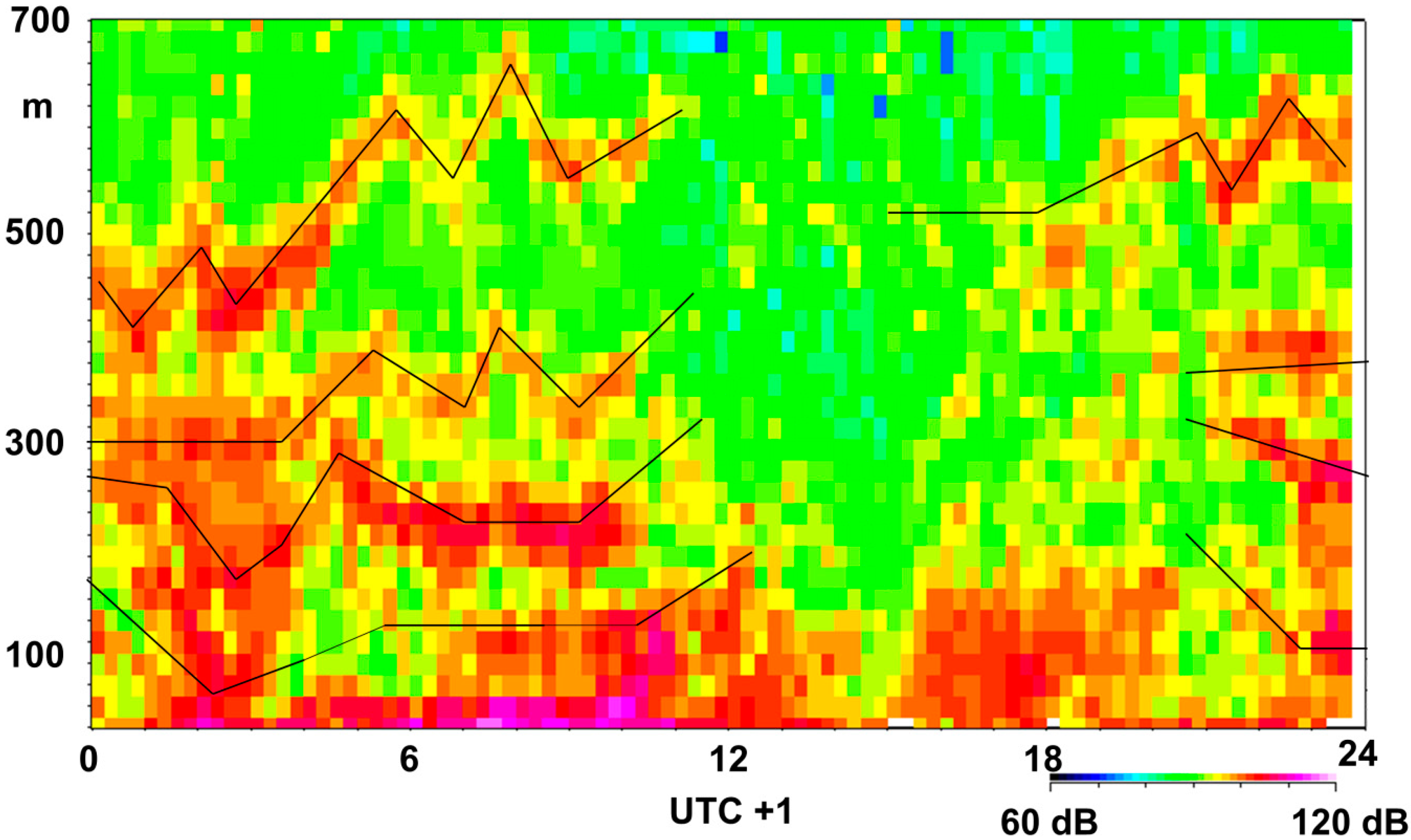
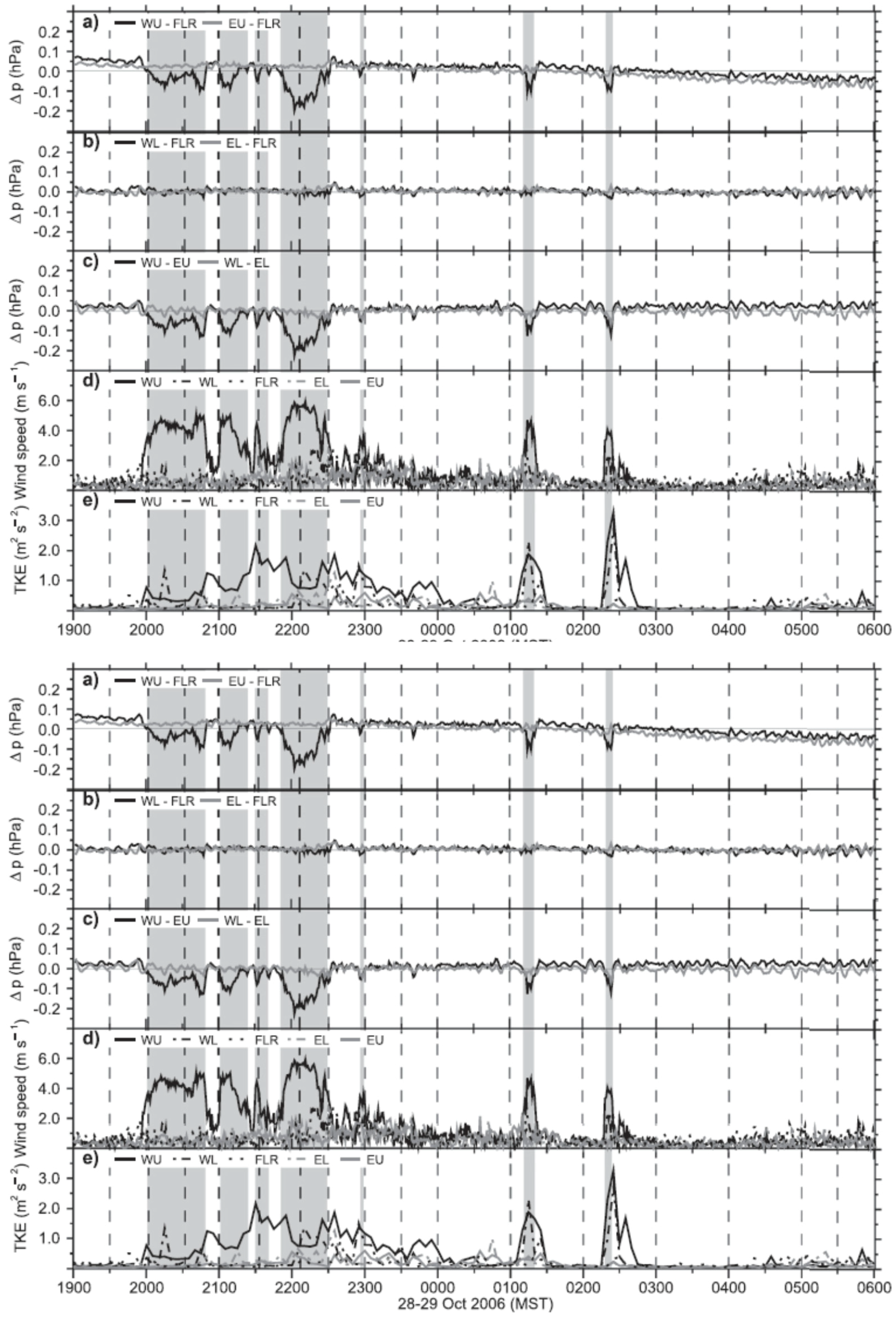
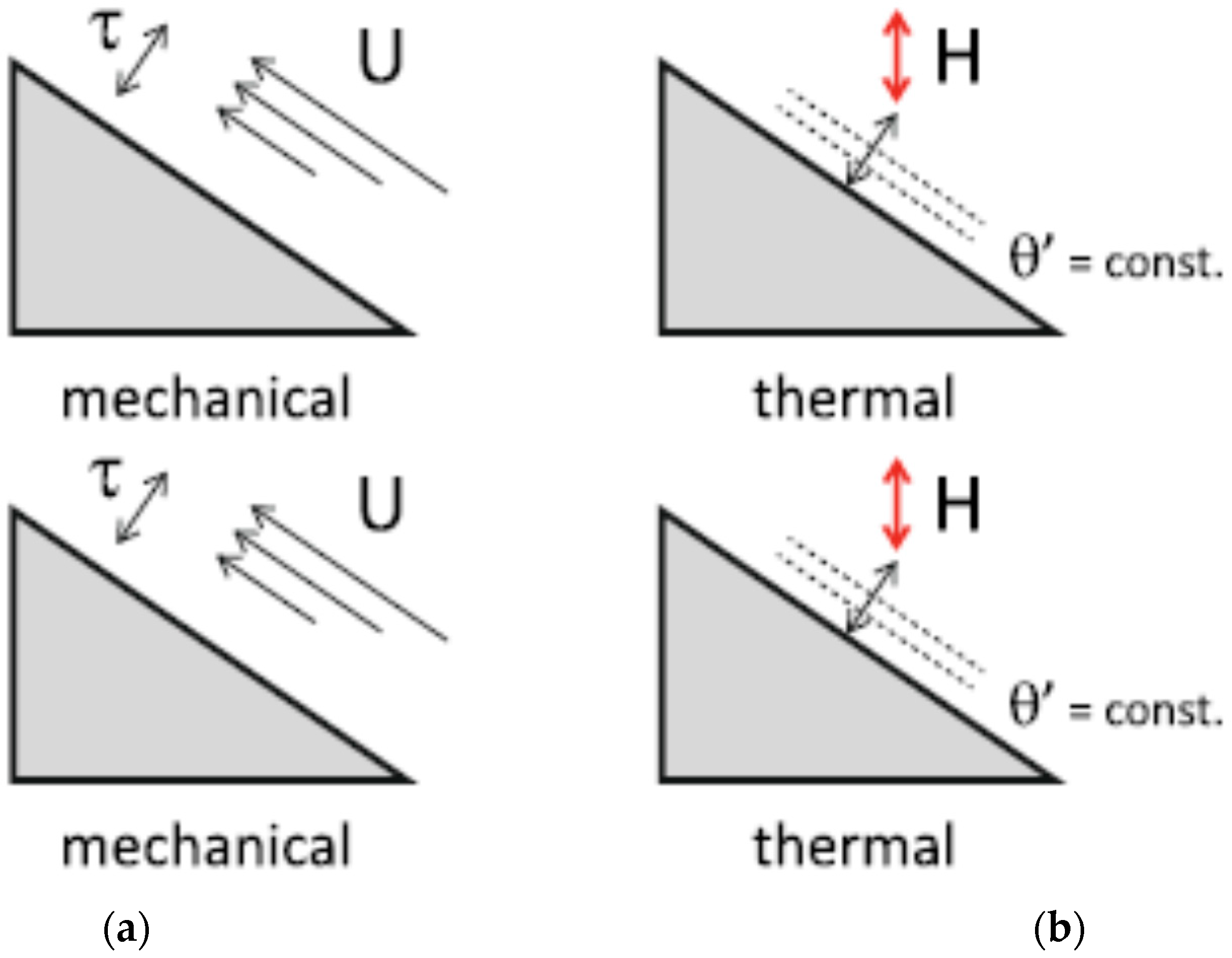
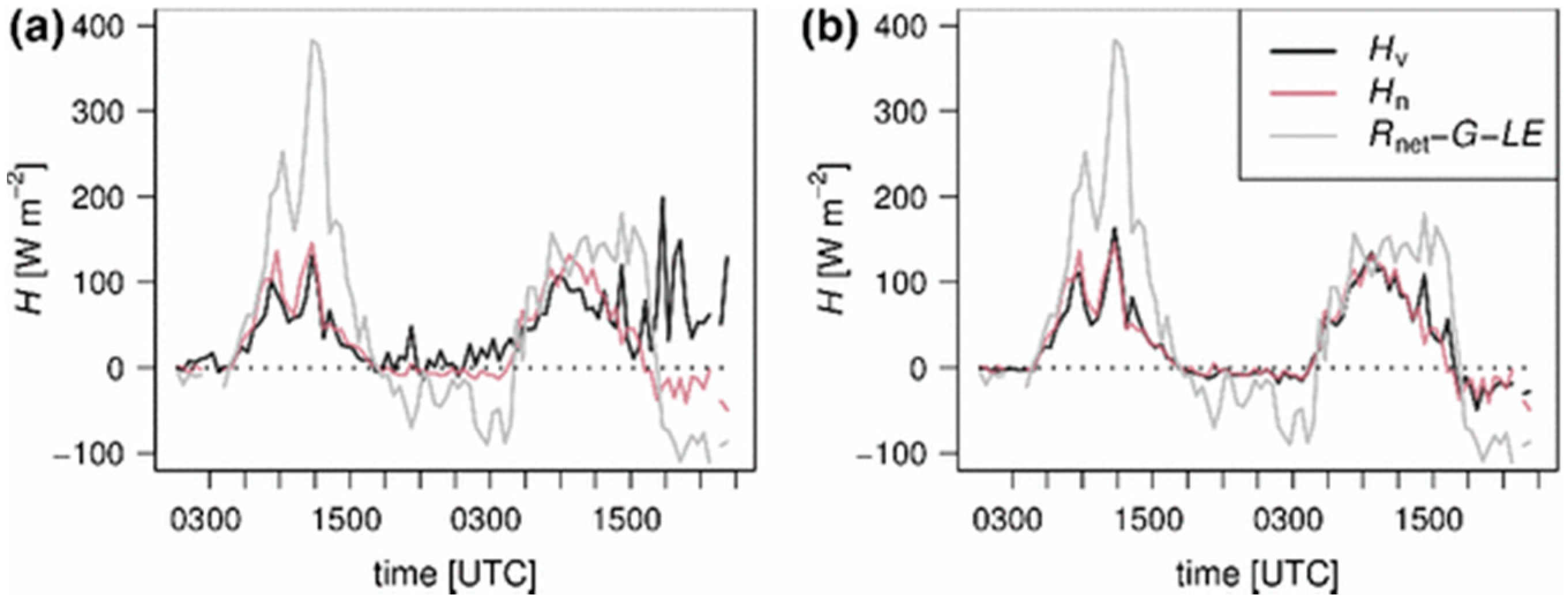
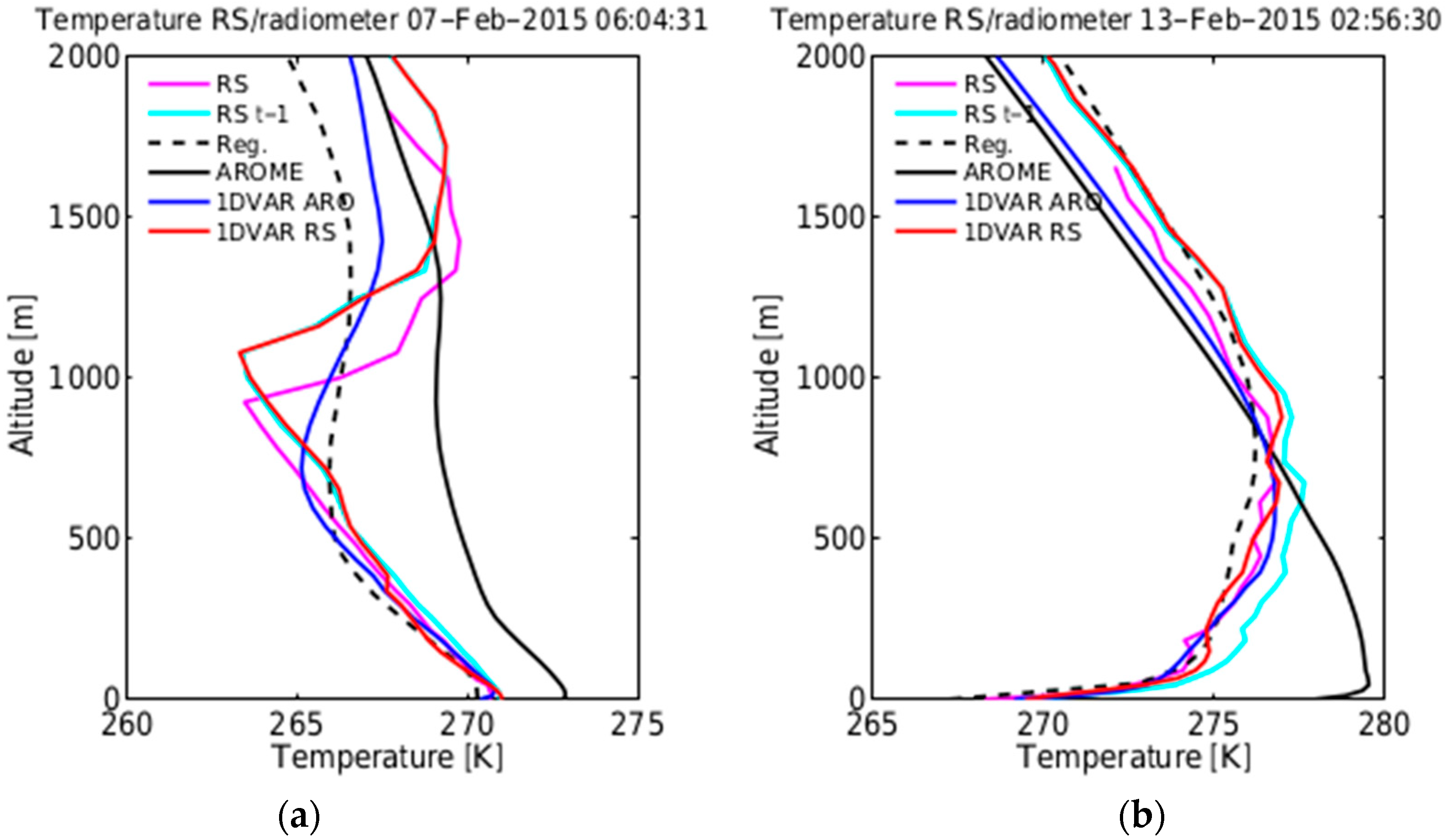
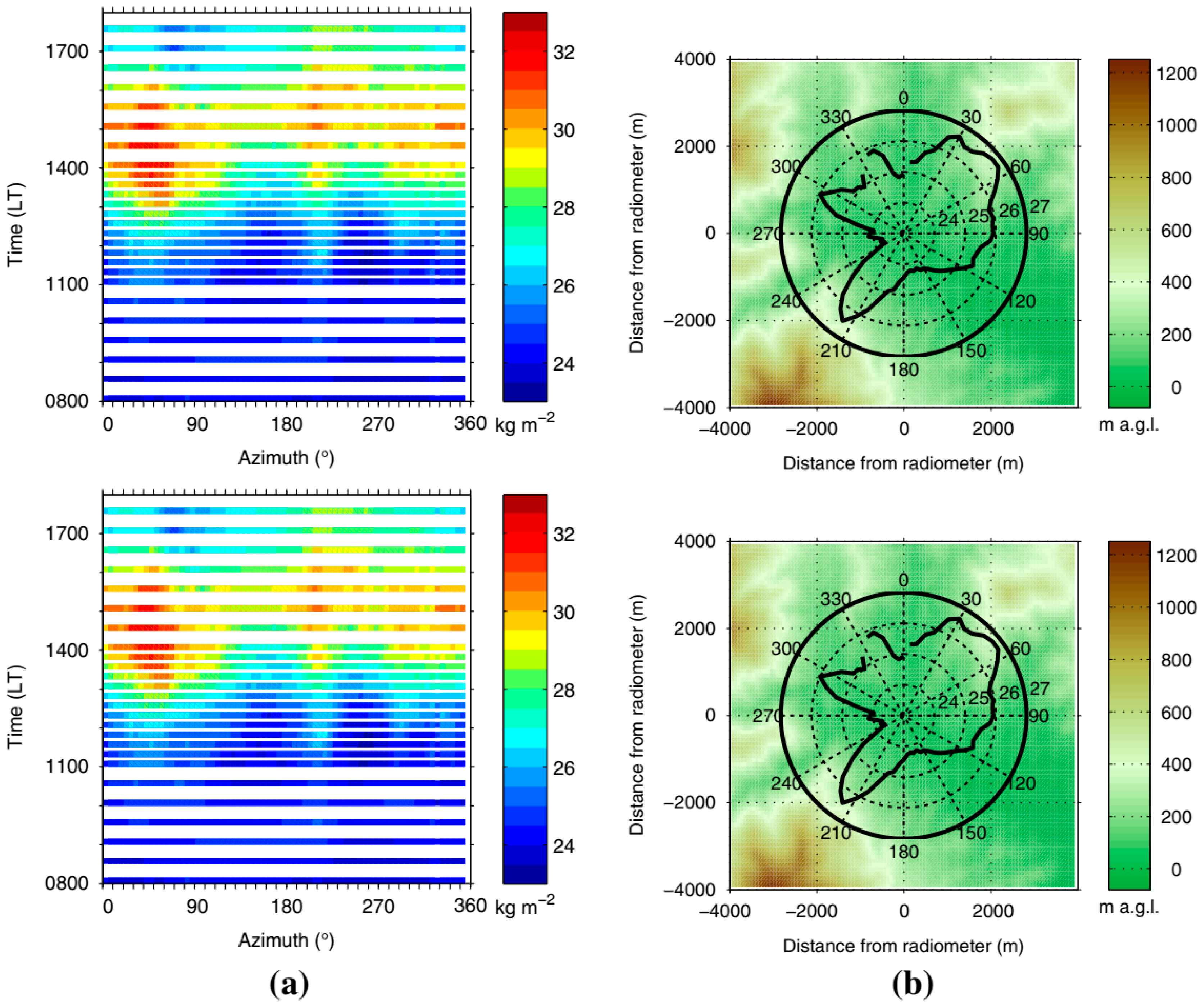
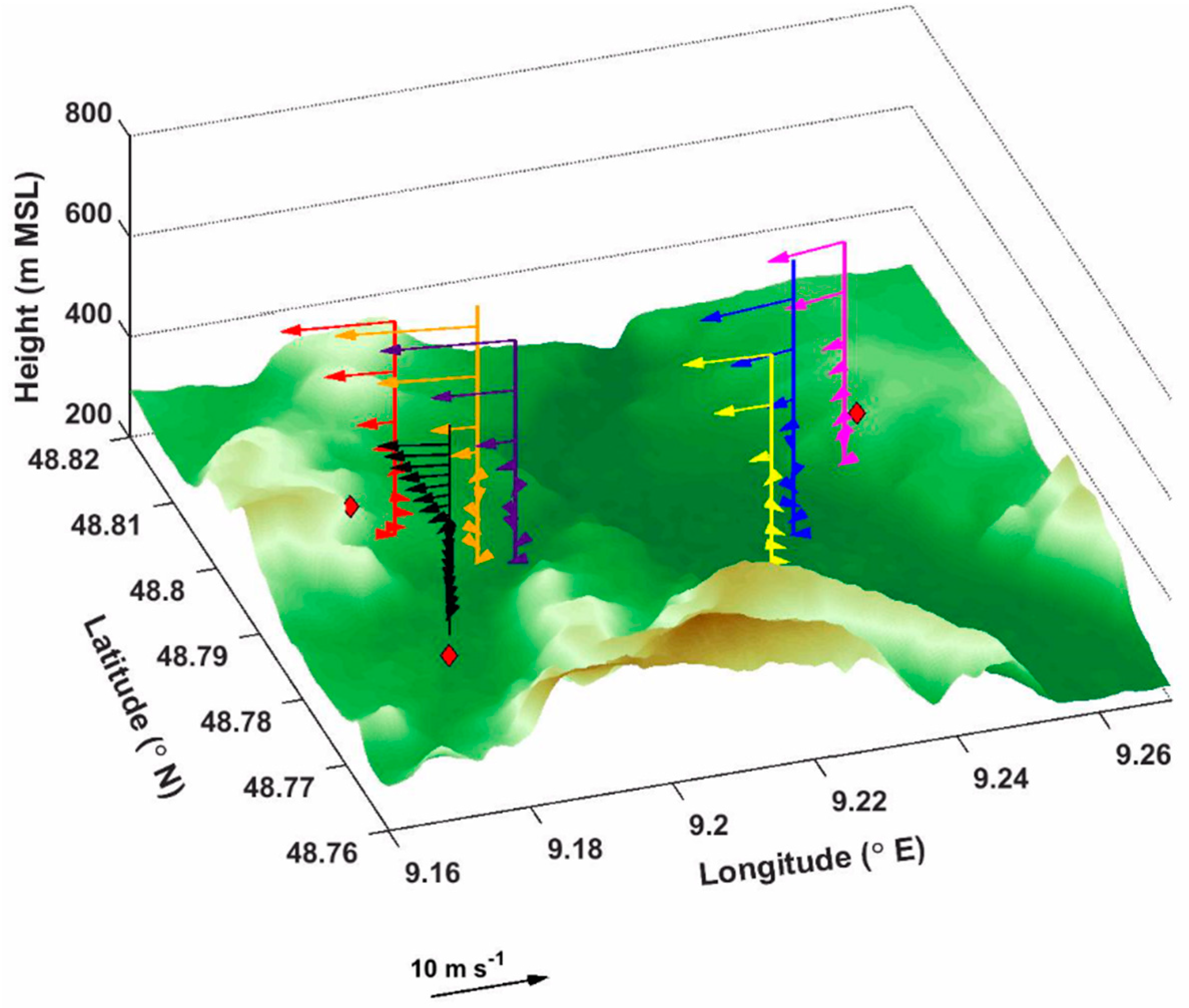
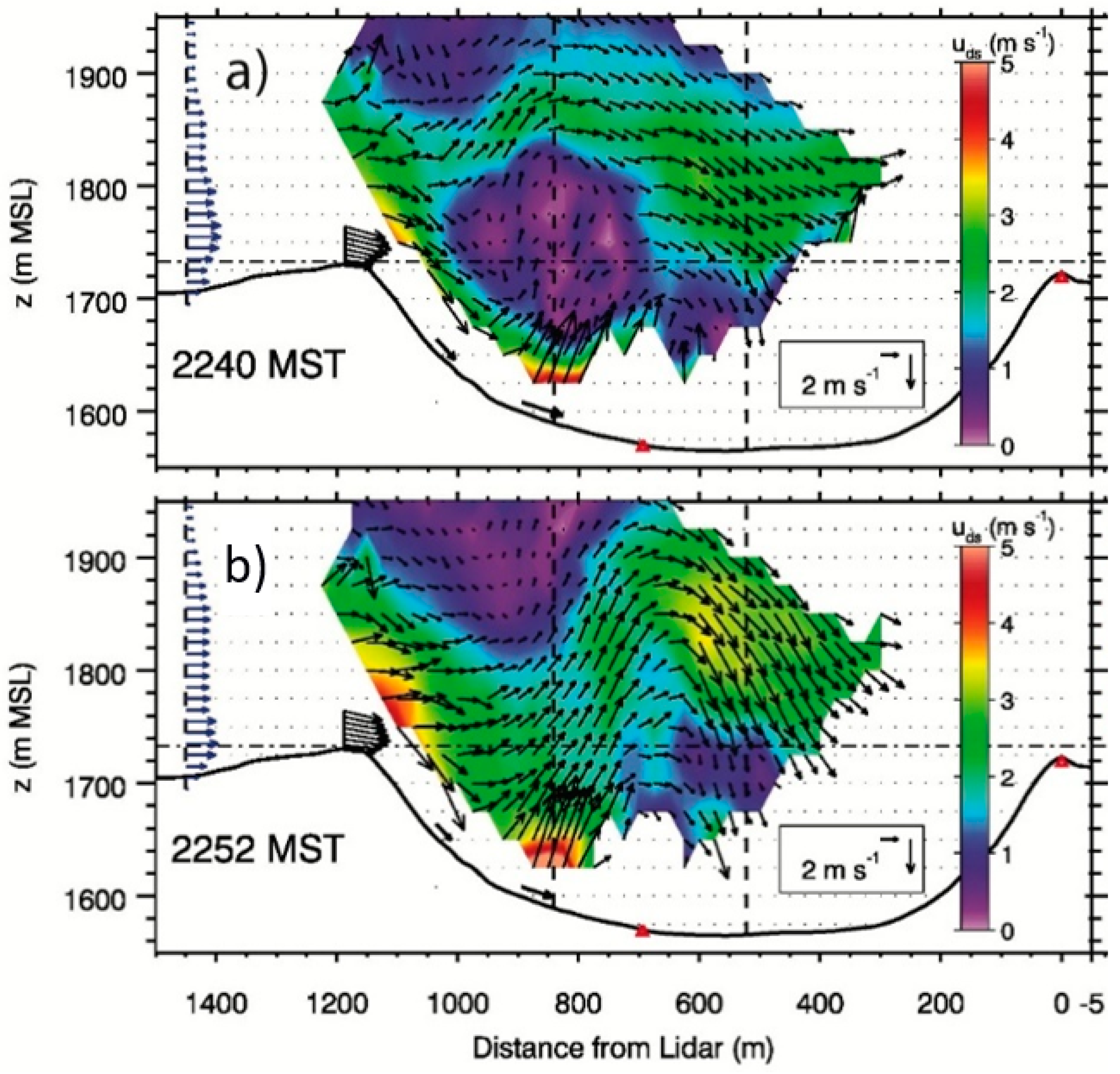
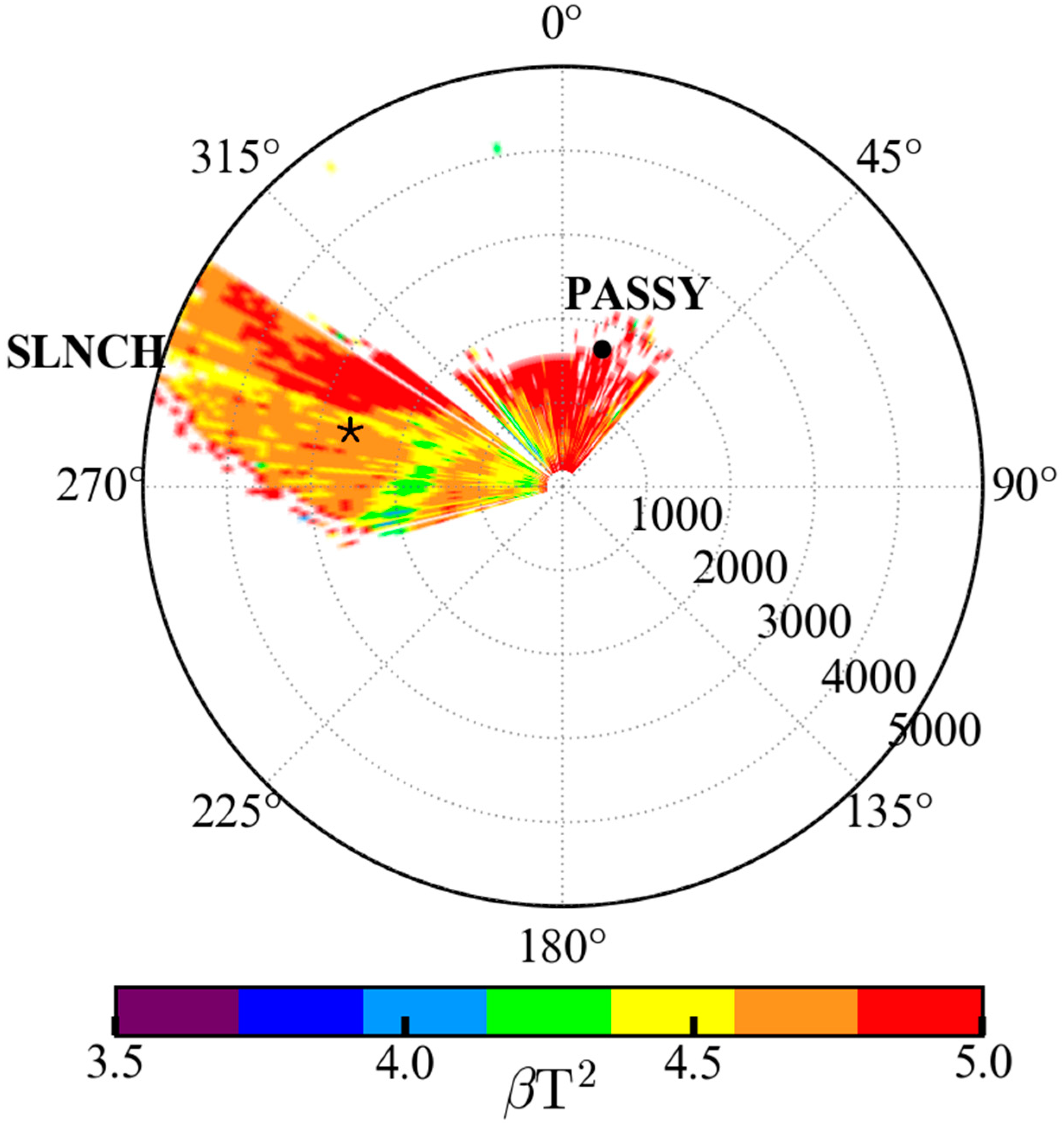
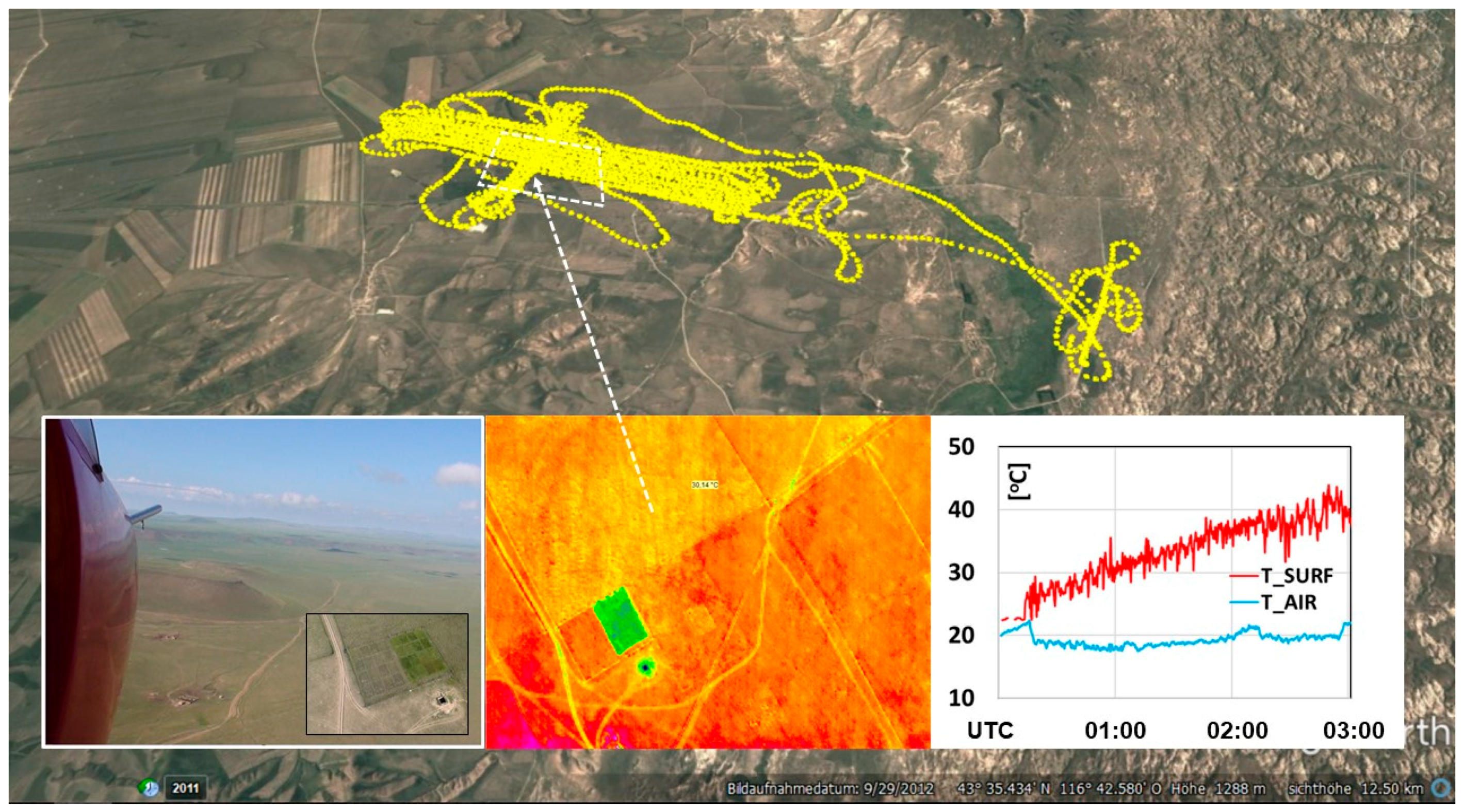
© 2018 by the authors. Licensee MDPI, Basel, Switzerland. This article is an open access article distributed under the terms and conditions of the Creative Commons Attribution (CC BY) license (http://creativecommons.org/licenses/by/4.0/).
Share and Cite
Emeis, S.; Kalthoff, N.; Adler, B.; Pardyjak, E.; Paci, A.; Junkermann, W. High-Resolution Observations of Transport and Exchange Processes in Mountainous Terrain. Atmosphere 2018, 9, 457. https://doi.org/10.3390/atmos9120457
Emeis S, Kalthoff N, Adler B, Pardyjak E, Paci A, Junkermann W. High-Resolution Observations of Transport and Exchange Processes in Mountainous Terrain. Atmosphere. 2018; 9(12):457. https://doi.org/10.3390/atmos9120457
Chicago/Turabian StyleEmeis, Stefan, Norbert Kalthoff, Bianca Adler, Eric Pardyjak, Alexandre Paci, and Wolfgang Junkermann. 2018. "High-Resolution Observations of Transport and Exchange Processes in Mountainous Terrain" Atmosphere 9, no. 12: 457. https://doi.org/10.3390/atmos9120457
APA StyleEmeis, S., Kalthoff, N., Adler, B., Pardyjak, E., Paci, A., & Junkermann, W. (2018). High-Resolution Observations of Transport and Exchange Processes in Mountainous Terrain. Atmosphere, 9(12), 457. https://doi.org/10.3390/atmos9120457




